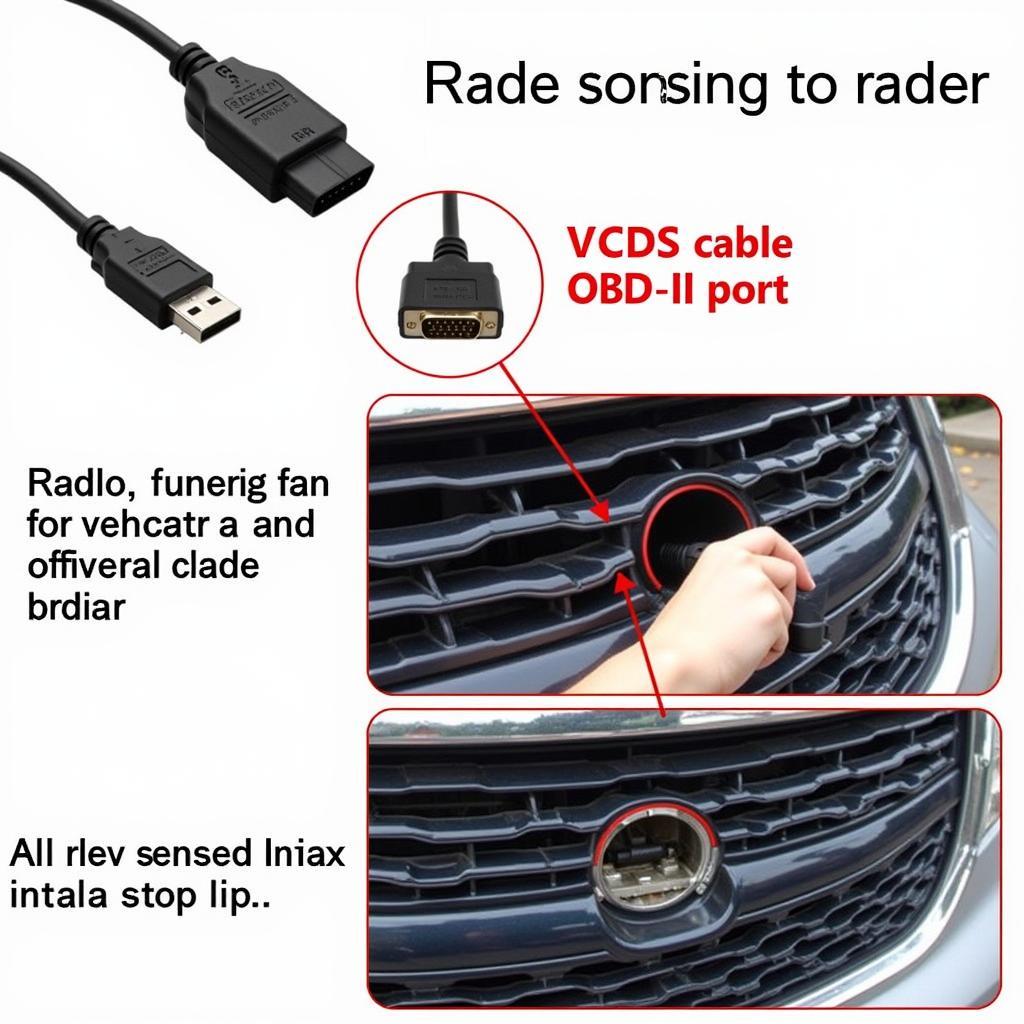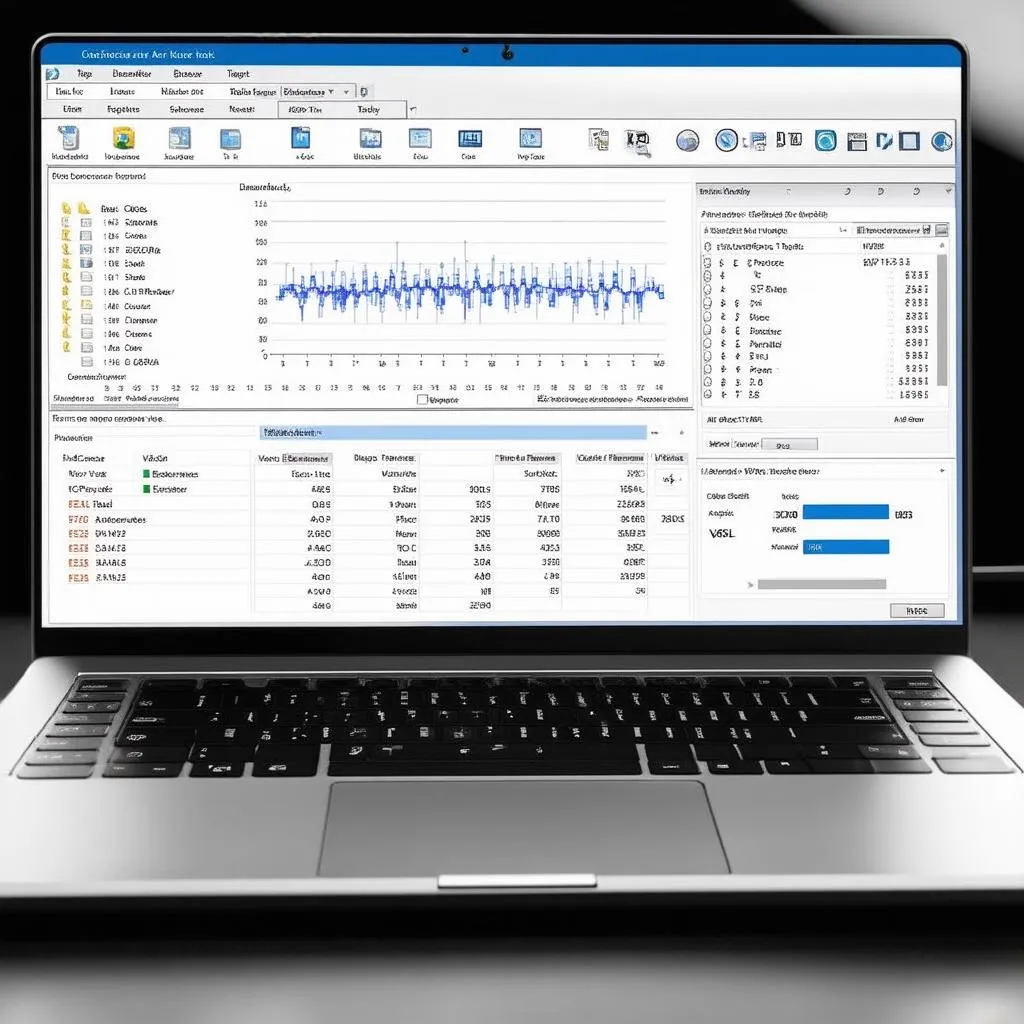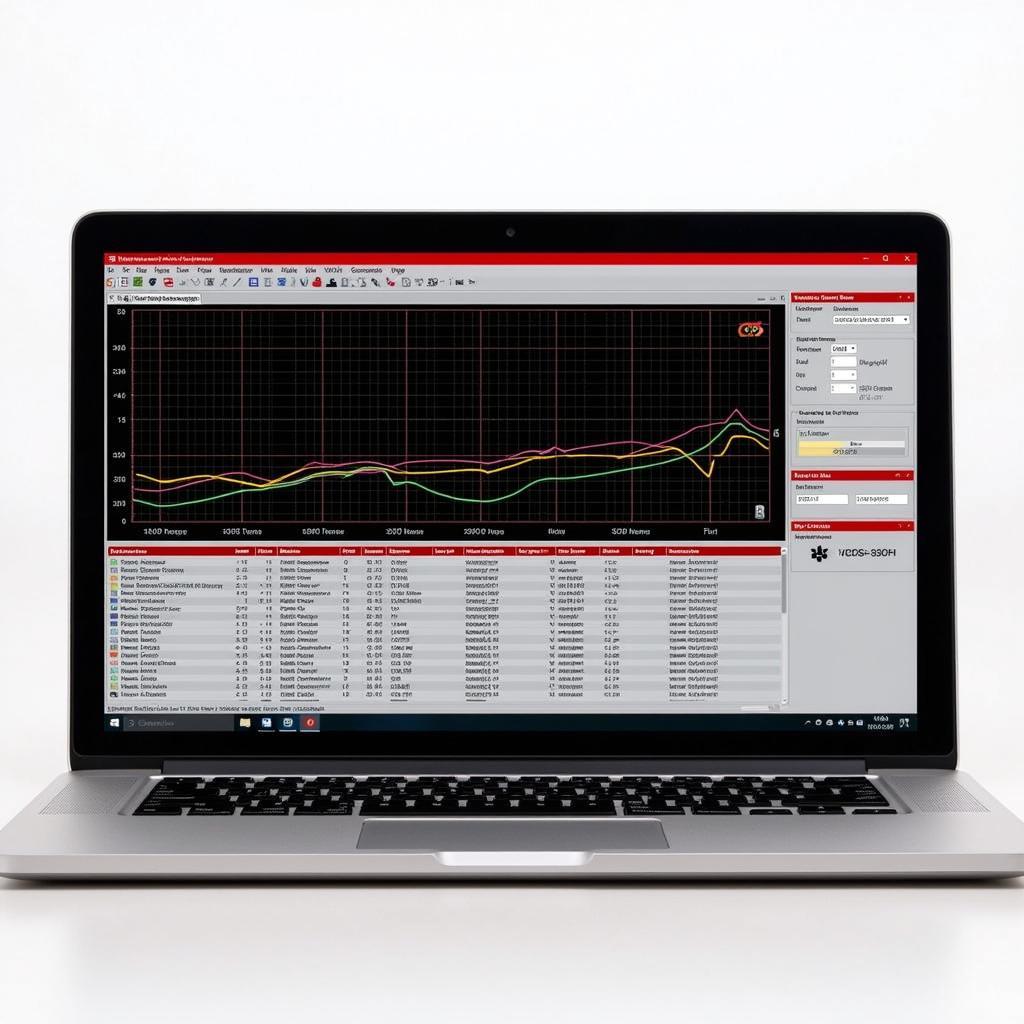VCDS ACC calibration is crucial for ensuring the proper function of your vehicle’s Adaptive Cruise Control (ACC) system. This guide delves into the intricacies of VCDS ACC calibration, offering valuable insights for car owners, mechanics, and technicians alike. We’ll explore common issues, troubleshooting techniques, and best practices for achieving optimal ACC performance. We’ll also look at some specific examples and scenarios you might encounter.
Understanding the importance of accurate ACC calibration is paramount. A miscalibrated system can lead to erratic behavior, compromising safety and driving experience. By familiarizing yourself with the process and potential pitfalls, you can ensure the reliability and effectiveness of your vehicle’s ACC system. This guide provides a step-by-step approach to performing VCDS ACC calibration, covering everything from pre-calibration checks to post-calibration verification. Want to learn more about other VCDS functions? Check out our guide on dsg calibration vcds.
What is VCDS ACC Calibration?
VCDS ACC calibration involves using the Ross-Tech VCDS software to fine-tune the ACC system’s sensors and control modules. This process ensures that the system accurately detects surrounding vehicles and maintains a safe following distance. It also helps prevent phantom braking and other common ACC issues. Several factors can necessitate ACC calibration, including replacing components like the radar sensor, control module, or even the windshield.
Why is VCDS ACC Calibration Important?
Proper VCDS ACC calibration is essential for safety, comfort, and optimal performance. A well-calibrated ACC system contributes to a smoother and more relaxed driving experience, especially in heavy traffic. It also plays a critical role in preventing accidents by ensuring that the vehicle maintains a safe distance from other vehicles. Let’s further explore the common scenarios and issues that might necessitate VCDS ACC calibration.
Common Scenarios Requiring VCDS ACC Calibration
Several scenarios might require VCDS ACC calibration. These include:
- Radar Sensor Replacement: After replacing a faulty radar sensor, calibration is necessary to ensure accurate distance measurement.
- Control Module Replacement or Update: Similar to the radar sensor, replacing or updating the ACC control module requires calibration for seamless integration with the system.
- Windshield Replacement: Even a seemingly unrelated component like the windshield can affect the ACC system, necessitating recalibration after replacement.
- ACC Malfunction: Issues like phantom braking, erratic behavior, or system failures often point towards a calibration problem.
 VCDS ACC Calibration after Radar Sensor Replacement
VCDS ACC Calibration after Radar Sensor Replacement
Performing VCDS ACC Calibration: A Step-by-Step Guide
Before starting the calibration process, gather the necessary tools, including a VCDS interface, a laptop with the latest VCDS software, and a level surface for the vehicle.
- Connect the VCDS Interface: Connect the VCDS interface to your vehicle’s OBD-II port and your laptop.
- Launch VCDS Software: Launch the VCDS software and establish communication with the vehicle’s control modules.
- Access the ACC Module: Navigate to the ACC module within the VCDS software.
- Initiate Calibration: Follow the on-screen prompts to initiate the ACC calibration procedure.
- Follow the Instructions: The software will guide you through the specific steps, which might involve driving the vehicle at a certain speed or positioning it in relation to a target. For more advanced VCDS usage, explore our guide on vcds eeprom write.
Troubleshooting Common VCDS ACC Calibration Issues
Sometimes, you might encounter issues during the calibration process. Common problems include communication errors, incorrect sensor readings, or failure to complete the calibration. In such cases, double-check the connections, ensure the vehicle is on a level surface, and verify the correct software version. For specific error code information, you can refer to our resource on 000115 vcds.
“A frequent oversight is neglecting the pre-calibration checks,” notes John Smith, Senior Automotive Diagnostics Engineer. “Ensuring proper alignment and functionality of related components can save you valuable time and prevent calibration failures.”
Maintaining Your ACC System
After successfully calibrating the ACC system, it’s essential to maintain it properly. Regular checks and timely troubleshooting can prevent future issues and ensure the system’s long-term reliability. Consider exploring our guide on vcds intake manifold adaptation for related maintenance information.
 VCDS Post-Calibration Check for ACC
VCDS Post-Calibration Check for ACC
“Regular maintenance is crucial for optimal ACC performance,” advises Emily Johnson, Certified Automotive Technician. “Addressing minor issues promptly can prevent them from escalating into major problems.”
In conclusion, VCDS ACC calibration is vital for maintaining the safety and performance of your vehicle’s ACC system. By understanding the process, common issues, and troubleshooting techniques, you can ensure a smooth and reliable driving experience. Following the steps outlined in this guide and performing regular maintenance will keep your ACC system functioning optimally for years to come.
FAQ
- How often should I calibrate my ACC system?
- What are the signs of a miscalibrated ACC system?
- Can I perform VCDS ACC calibration myself?
- What should I do if the calibration fails?
- How much does VCDS ACC calibration cost?
- Is it safe to drive with a miscalibrated ACC system?
- What are the benefits of a properly calibrated ACC system?
Need help? Contact us via Whatsapp: +1 (641) 206-8880, Email: CARDIAGTECH[email protected] or visit us at 276 Reock St, City of Orange, NJ 07050, United States. Our customer service team is available 24/7. Check out our vcds settings for more information on other VCDS functionalities.


